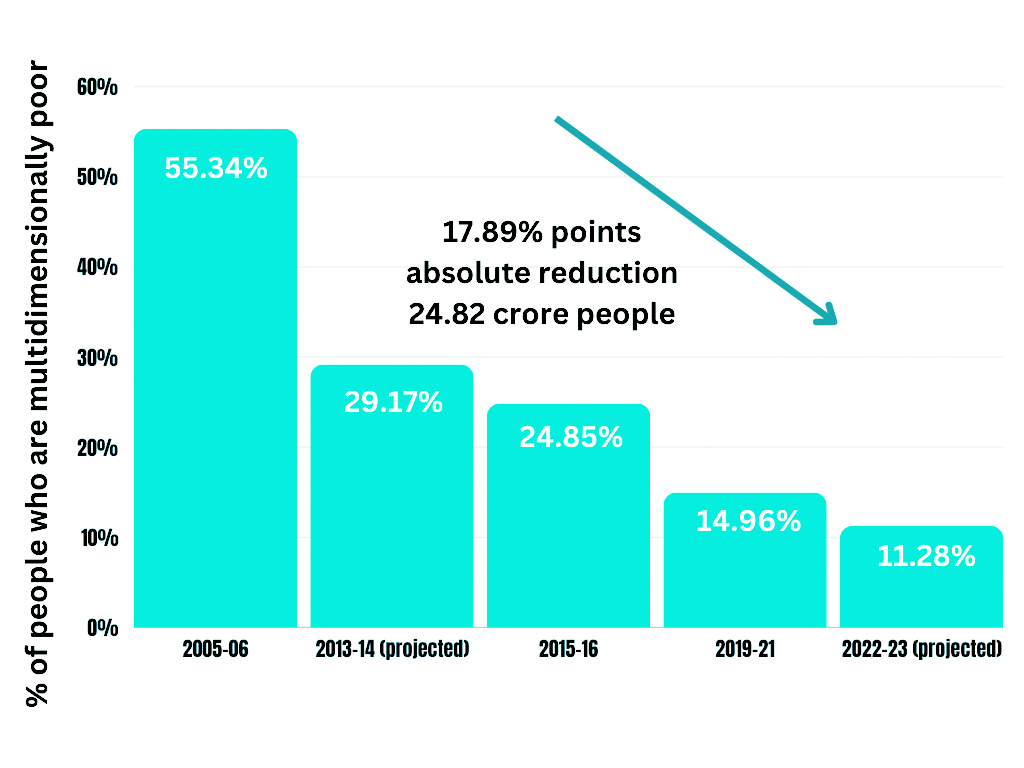
Traditionally, poverty has been measured by assessing monetary resources available for an 0individual or household. The monetary metric generally used were household income or consumption expenditure. However, this approach of measuring poverty has been criticized for not capturing the multiple deprivations which may be faced by individuals in their lives. Development not only constitutes economic progress, but also the process of expanding people’s capabilities to convert resources into valuable outcomes.
The conventional measures of monetary poverty also suffer from several other limitations like:
1. Income, while necessary, is not a sufficient condition to ensure the overall well-being of individuals, as, income in some cases is spent on items which do not involve the welfare of the household.
2. Due to unavailability of income estimates, monetary poverty measures often rely on consumption expenditure. This may not accurately represent the household’s income, especially when borrowed funds contribute to consumption. In such cases expenditure may surpass or fall short of the actual income depending on borrowing and lending/ saving behavior of household.
3. Household welfare depends not only on its own spending but also on state expenditures for people’s well-being. Monetary poverty measurements overlook the effect of state interventions like subsidized food grains, shelter, sanitation, free education and health, and nutritional support.
Thus, the Multidimensional Poverty Index (MPI) is considered as a more direct and comprehensive measure of people’s deprivation and poverty. MPI captures and reveals the outcome of economic growth and development, income and its distribution and various development initiatives of the State.
Besides, it has been globally realised that non-monetary measures complement monetary measures to capture diverse dimensions of poverty.
Multidimensional Poverty Index The global Multidimensional Poverty Index (MPI) is based on the of Alkire and Foster (AF)methodology that identifies people as poor or not poor based on a dual-cutoff counting method.
It follows the universally acknowledged metric designed to assess acute poverty, providing a complementary perspective to conventional monetary-based measures of poverty assessment.
Global MPI uses ten indicators covering three areas namely health, education and standard of living. Health dimension includes Nutrition and Child & Adolescent Mortality indicators, education dimension includes Years of Schooling and School Attendance indicators and standard of living dimension includes 6 household specific indicators namely, housing, household assets, type of Cooking Fuel, access to Sanitation, Drinking water and Electricity.
The MPI assesses poverty at the individual level. If a person is deprived in a third or more of ten (weighted) indicators, the global MPI identifies them as ‘MPI poor’.
The MPI is computed by multiplying the incidence of multidimensional poverty (H) and the intensity of poverty (A), denoted as MPI = H x A. Incidence (H) shows the percentage of people who are multidimensionally poor, and Intensity (A) shows the percentage of weighted deprivations the average multidimensionally poor person suffers from.
The MPI value for a given population, therefore, is the share of weighted deprivations faced by multidimensionally poor individuals divided by the total population.
Hence the MPI is known as the adjusted headcount ratio. MPI includes both the share of people in multidimensional poverty and the extent to which they are deprived.